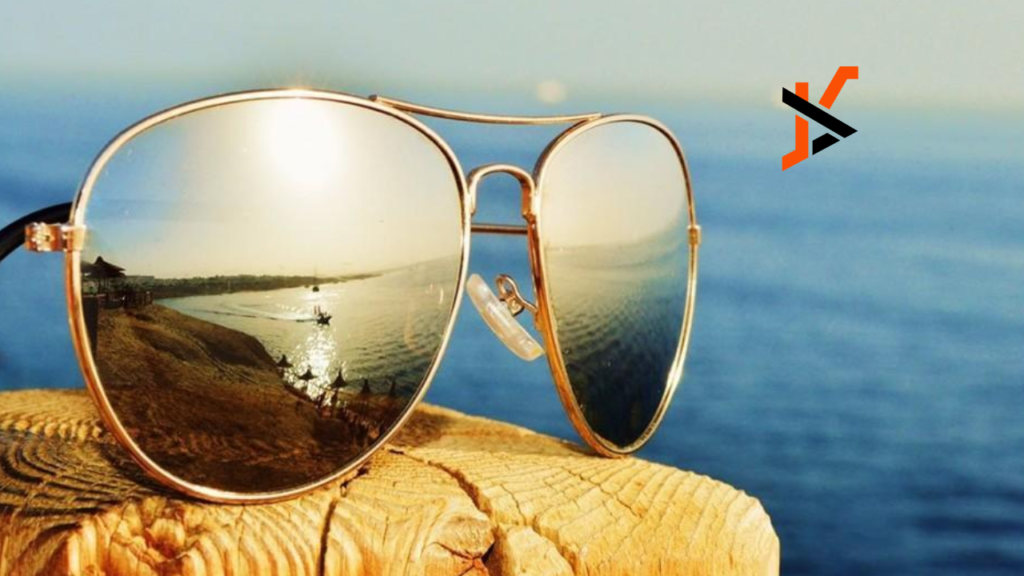The sun emits visible light as well as invisible ultraviolet (UV) radiation. Even though we can see visible light, if we don’t adequately shield our eyes from UV rays, it might cause injury.
What is UV Radiation?
UV radiation is electromagnetic radiation with a lower range than visible light, which means that our eyes can’t see it. There are two main kinds: UVA and UVB rays. Because their frequency is longer, UVA rays can reach deeper into the eye and hit the retina. UVB rays are shorter than UVA rays and mostly burn people. However, being outside in the sun for a long time can also cause cataracts and other eye problems.
The Effects of UV Rays on Eyes
Excessive UV light exposure may result in numerous eye problems, both immediate and long-term. Photokeratitis, which feels like sunburn on the cornea, may result in the short term. Redness, wetness, light sensitivity, and fuzzy vision are some of the symptoms. Fortunately, this normally goes away after a few days.
The long-term consequences, however, are more worrisome. Long-term UV exposure raises the possibility of cataracts, which obscure the lens and severely reduce vision. Because it harms the macula, the area of the retina responsible for crisp center vision, it may also exacerbate macular degeneration, a major factor in vision loss among the elderly.
How Sunglasses Block UV Rays
It’s important to wear high-quality aviator sunglasses with UV protection to protect yourself from the sun’s damaging rays. However, how do they function?
Sunglasses like Chloe sunglasses inhibit UV light by applying specific coatings or filters to the lenses. The most popular kind is called a chemical absorber; it comprises molecules that take in UV rays, transform them into heat, and then release the heat away from your eyes. A reflecting filter is another kind that deflects UV rays away from your eyes using its covering.
Different UV Filter Types for Lenses
Not every pair of sunglasses blocks UV rays the same way. Wear Carrera sunglasses that protect against both UVA and UVB rays. The label should indicate the amount of safety. Some glasses block 100% of both types of rays.
How to Pick the Best Aviator Polarised Lenses
There are important things to consider when picking out the right pair of aviator glasses to ensure you look good and stay safe.
Frame Materials
- Classic Metal: The first aviator sunglasses were made of nickel or titanium, which are both light metals. Metal frames look great and last a long time, but they may not be right for all face types and can be heavier than plastic frames.
- Modern Acetate: Today, good acetate frames are light, comfy, and come in a lot of different colors and styles. People who want to save money or put comfort first should choose these frames.
How to Choose the Right Lens Colour
The style and way your aviator sunglasses block light are both affected by the color of their lenses. Here are some colored lenses that people like:
- Black/ Gray Lenses: These lenses successfully block glare and have a neutral color that makes it easier to see depth. They work well in bright light and for normal use.
- Amber/Brown Lenses: These lenses make the contrast better and the view warmer, which makes them great for driving and doing other activities when the light is moving or there isn’t much of it.
- Mirrored glasses: These glasses look great and do a great job of blocking out glare. However, they might not be the best choice for low-light areas because they can block some visible light.
Learning About Lens Technology
UV protection is important, but new lens technology has other perks to improve seeing.
- Polarised Lenses: People who spend a lot of time outside should wear polarised lenses. They reduce the glare from light bouncing off of water, roads, or snow, so you can see better and feel less strain in your eyes.
- Gradient Lenses: Gradient lenses have a stylish two-tone design. The top has a darker tint for bright conditions, and the bottom has a lighter tint for better close-up work.
- Photochromic Lenses: Photochromic lenses change color when light changes. They get darker in bright sunlight and lighter at night, so you can see clearly in all kinds of conditions.
Wide Variety of Aviator Sunglasses to Fit Any Face
Finding the right aviator sunglasses is more than just considering their practicality; it’s also about selecting a design that accentuates your unique facial characteristics. If you want to know which aviator style is best for your face shape, here’s a quick guide:
Identifying Your Face Shape
1. Oval: An ideal form is the oval, which is symmetrical and attractive. On an oval face, the majority of aviator styles will look fantastic.
2. Round: If your jawline is soft and curved and your cheekbones are larger, try aviators with square or rectangular frames to make your face seem longer and more defined.
3. Square: Square faces are characterized by a wide forehead and a strong jawline. Sunglasses with a curved browline or rounded aviator lenses can soften your features.
4. Heart-shaped: A heart-shaped face is characterized by a broader forehead and a pointed chin. Try wearing aviators with broader bottoms to make your face seem more proportionate.
Following this guidance, you should have no trouble finding stylish aviators that will keep your eyes safe.

